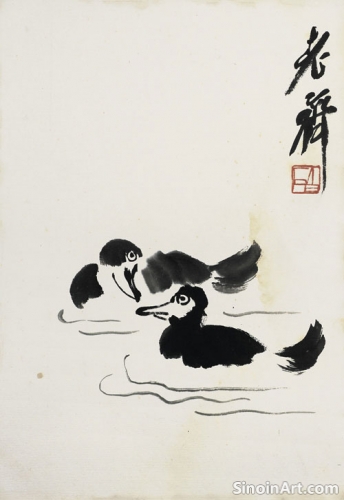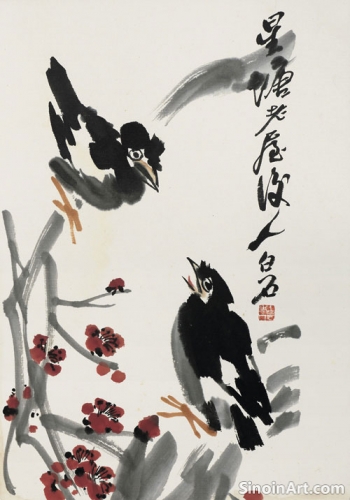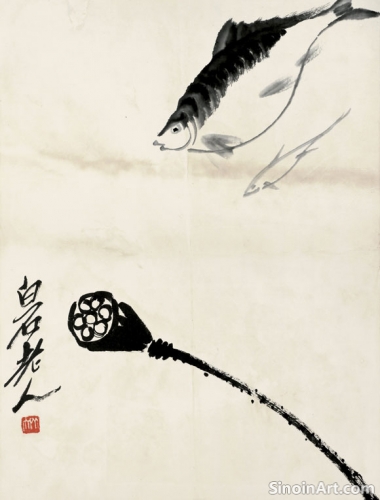The Use of Ink and Water in Xieyi Technique
|
The seemingly simple combination of ink and water is the very foundation of Xieyi painting, and mastering their use is crucial to achieving expressive effects. The control of these two elements is a fundamental skill that every Xieyi artist must develop. Through varying dilutions and applications, artists can achieve an extraordinary range of tonal values and textures.  Different concentrations of ink, from deep black to light gray, allow artists to create a sense of depth, form, and atmosphere. The rich black of pure ink can be used to create bold, dramatic contrasts, while diluted washes of gray create soft, subtle transitions. The way these tones are applied impacts the texture and feel of the final artwork. Mastering this tonal range is essential.  The amount of water used also affects the way the ink behaves on the paper. A heavily loaded brush with diluted ink will create fluid, flowing washes, while a drier brush will result in broken, textured strokes. The manipulation of water allows the artist to create a vast range of expressive marks. It's a dynamic process that allows for spontaneity and expression.  The interaction between ink and water on absorbent paper creates unique effects that are impossible to achieve with other mediums. The ink spreads and blends in unexpected ways, creating soft, hazy transitions and dynamic edges. The artist must learn to anticipate and to work with the unpredictable nature of ink and paper. This interplay gives the paintings their dynamic quality. The control of ink and water also allows for the creation of subtle gradations in tone, creating a sense of volume and form. The use of layered washes adds depth and complexity to the artwork. This subtle and nuanced approach to applying ink and water is one of the hallmarks of Xieyi painting. The subtle gradations create an atmospheric and dynamic feel. |
Tag : Ink and water techniques, Chinese ink wash, tonal values, ink dilution, water control
Related information
- Xieyi Painting and the Concept of "Tian Qu"
- Early Development of Xieyi: Song and Yuan Dynasties
- The Use of "Blank Space" in Xieyi
- Xieyi Landscape Painting: Capturing the Spirit of Nature
- The Role of the Brush in Xieyi Painting
"Tian Qu" (natural charm) is a key aesthetic ideal in Xieyi painting, emphasizing a sense of effortless freedom, spontaneity, and a deep connection to nature, requiring artists to let their intuition guide the creative process, resulting in works that feel both deeply moving and authentically beautiful.
The roots of Xieyi painting can be traced back to the Song Dynasty (960-1279), when scholar-officials began to develop a distinctive style of painting that reflected their unique values and aesthetics. The emphasis shifted from courtly patronage to individual expression, setting the stage for the emergence of Xieyi.
Liúbái (blank space) is a vital element in Xieyi painting, creating balance, depth, atmosphere, and encouraging active viewer participation while reflecting philosophical concepts of emptiness and possibility. It's as important as the inked areas.
Landscape painting (山水画, shanshuihua) is a major theme in Xieyi, reflecting a deep reverence for nature. Artists seek not to replicate realistic views, but to capture the essence and spirit of the natural world. They aim to evoke a feeling of vastness, serenity, and harmony.
The Chinese brush is essential to Xieyi painting, serving as an extension of the artist's hand and mind. Mastering brush types, grip, pressure, and stroke is crucial for creating the diverse range of expressive marks and textures characteristic of the art form.